Brian Clegg's Blog, page 92
July 21, 2014
Masters of Grauniad Central
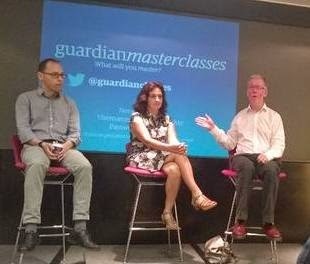 The panel looking gormless
The panel looking gormless (photo Debbie Gilpin @Deborah_Deborah)I had the pleasure of helping organise and taking part in a 'How to write a popular science book' masterclass on Sunday, and just wanted to take the opportunity to say that if the attendees enjoyed it as much as I did they will have had a good day indeed.
We had a fascinating keynote speech on why communicating science is important from Professor Stephen Curry, one of the organisers of Science is Vital and an early scientist blogger, a great talk from science journalist and author of Geek Nation Angela Saini on what makes a good popular science book (and what doesn't), various odds and sods from me, ranging from research to selling your book, and a spot-on fact-filled guide to producing the perfect proposal and the book production process from ex-MD of Icon Books and author of The Science Magpie, Simon Flynn.
The closing part of the event was a chance for members of the audience to give brief pitches for book ideas to panel made up of Simon, bestselling author M. G. Harris and me so that we could (hopefully) give some words of wisdom.
Throw in the most lavish 'light lunch' I've ever had and it was a day that went past remarkably quickly. Apart from seeing old friends in the other presenters, I really enjoyed meeting the audience, who were a fascinating bunch, and hearing some of their book ideas, at least three of which I would be rushing out to buy if they are ever published.
Lessons? Many. But I would particularly note the importance of having passion in your subject and narrative in your writing - plus having an utterly brilliant proposal.
It was a great day and I hope we have a chance to do another.
Published on July 21, 2014 00:28
July 18, 2014
Please rip me off!
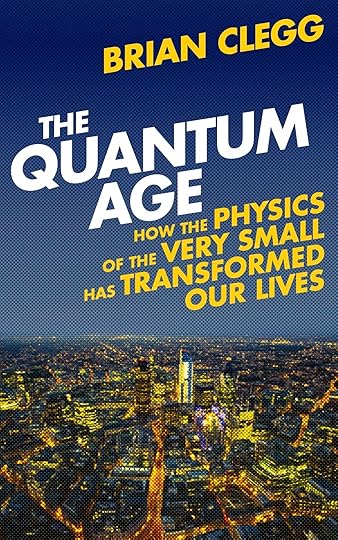 Here's the thing - I'm very pleased with my new book
The Quantum Age
. It combines the weird and wonderful nature of quantum physics with an exploration of remarkable quantum applications, from lasers to superconductors, and the stories of the development of these ideas and technologies featuring some big (and sometimes decidedly strange) characters.
Here's the thing - I'm very pleased with my new book
The Quantum Age
. It combines the weird and wonderful nature of quantum physics with an exploration of remarkable quantum applications, from lasers to superconductors, and the stories of the development of these ideas and technologies featuring some big (and sometimes decidedly strange) characters.The Kindle edition usually sells for about £8.99, but as part of their 'Summer Reads' promotion, Amazon currently has it at 99p ($1.69) - because why wouldn't you want to read about something as mind boggling as quantum physics on the beach? Being a Kindle ebook, you can read it on a Kindle device, but also on tablets, smartphones, laptops, the better kinds of abacus* - so there's no excuse.
You are probably thinking, yes, but I don't want to deprive Brian of income. Don't worry - I really do want you to get a copy. Leaving aside the fact that not everyone would buy it at full price, if enough of you do buy it at 99p it can soar up the Kindle charts, become much more visible and that gives it a huge amount of momentum of its own.
So please do rush over to Amazon.co.uk (just click that link) or Amazon.com, and rip me off. You'll make my day. (And please spread this as widely as you can!)
*OK, maybe not the abacus.
Published on July 18, 2014 03:07
July 17, 2014
To boldly stay at home
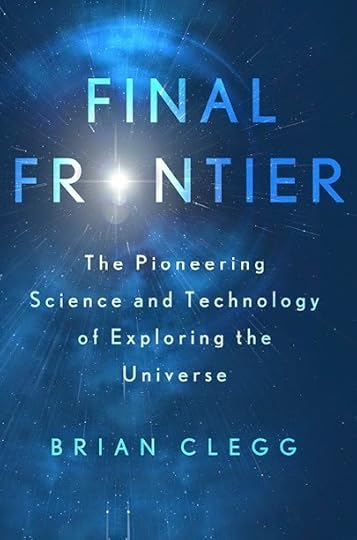 I was mildly depressed by the title of a piece in The Telegraph the other day by Sinclair Mckay. 'Let's hope galactic travel never takes off,' it reads, with the subhead 'A British launch pad for space tourism will diminish the mystery of the universe.'
I was mildly depressed by the title of a piece in The Telegraph the other day by Sinclair Mckay. 'Let's hope galactic travel never takes off,' it reads, with the subhead 'A British launch pad for space tourism will diminish the mystery of the universe.'One of the reasons I was mildly depressed was that in a few weeks time I've a new book out from my US publisher, St Martin's Press called Final Frontier , celebrating our attempts to travel into space and looking positively into the future.
To be honest, the article isn't as extreme as the title, but I think there are several ways that Mr Mckay gets it wrong. The first is that term 'galactic travel'. Of course any space travel is likely to be 'galactic travel' in the sense that it's unlikely to be intergalactic - but by that argument, nipping down to the shops is galactic travel, and that already has taken off. Quite a while ago. I think the headline writer is investing too much in Richard Branson's rather cocky (oxymoron) 'Virgin Galactic', as the kind of travel that's likely to happen from a British spaceport would mostly be sub-orbital - so not really even travel within the solar system, let alone on a galactic scale.
As for that subtitle, there is no more baloney than to say space travel 'diminishes the mystery of the universe'. This is reminiscent of the Keats suggestion that Newton somehow diminished the wonder of nature by explaining the colours of the rainbow and unravelling its mysteries. As Richard Dawkins so eloquently pointed out in his book Unweaving the Rainbow (see, I can say nice things about him), the reverse is true. When we find out more about the rainbow (or the universe) we add extra depths of wonder - we still have the joy of seeing it, but we also have the thrill of understanding it. Mystery is a great tempter, but we also want some outcomes - if all mysteries remain unfulfilled it is not enough for any but the gullible - and the wonder of the universe is that there always new mysteries, so we don't run out of challenges.
As it happens, the text of the article has some elements I can agree with. Simply popping into space to see the view - space tourism - is not really advancing humanity and, frankly, would be nice if we could do without it, were it not that it is a good way of funding some aspects of space technology, because one of the big shifts in the way we approach space travel is the increasing involvement of the private sector. This is too big a venture to leave to either governments or the private sphere alone.
I'm not, by the way, arguing that instead space exploration should be mostly about science. It is never going to be mostly about science. We can pretty well always get more bangs for our scientific buck by using unmanned equipment than going to all the expense of keeping humans alive. But one thing I did rediscover when writing that book was my sense of joy in the idea of humans going out into deep space. Yes, it is corny - but there really is something special about boldly going in good Star Trek fashion.
So when Mr Mckay says 'I mean no disrespect to the platoons of boffins... It is more to do with a sense that the illimitable darkness and mystery of the universe has already been diminished.' I say tosh and baloney. The more we find out about the universe, the greater its sense of wonder. The medieval universe was little more than the solar system - they had no idea about the kind of amazing sights that the Hubble telescope (only made possible by going into space) gives us every day.
Bring it on.
Published on July 17, 2014 01:27
July 16, 2014
Doing pretty well?
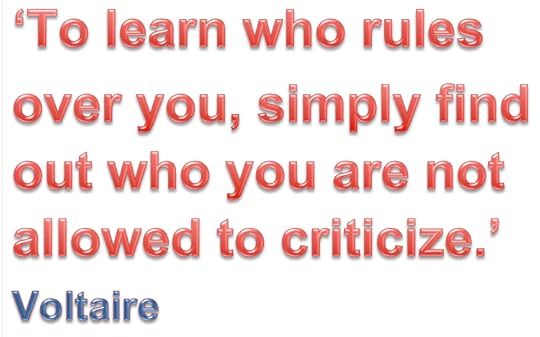 Yesterday, a couple of people on Facebook shared this Voltaire quote with me, illustrated by an image of the masses being crushed by a rich hand. (You could tell it was rich, because it had a fancy bejewelled ring.) It struck me this was a much more interesting concept than was probably intended, because it may well tell us a lot about how things have get better, at least in some parts of the world.
Yesterday, a couple of people on Facebook shared this Voltaire quote with me, illustrated by an image of the masses being crushed by a rich hand. (You could tell it was rich, because it had a fancy bejewelled ring.) It struck me this was a much more interesting concept than was probably intended, because it may well tell us a lot about how things have get better, at least in some parts of the world.The fact is, in the West at least, we are doing pretty well on this measure, to the extent that you begin to wonder if anyone does rule over us by this definition (is that democracy?).
Specifically there is no possibility that we aren't allowed to criticize politicians or bankers or rich businesspeople (if you doubt this, watch an episode of Have I Got News for You). We don't just do it, we do it for entertainment. We are also allowed to criticize religion as we never were before, which is just as well when you look at the amount of negative stories in the news with a religious context. (A lot of people are scared of criticizing one particular religion because of fear of irrational backlash, but that is very different from not being allowed to criticize.)
There was a time when we weren't allowed to criticize the establishment - but that goes back to before the 1950s, and as the recent kerfuffle over the Butler-Schloss appointment shows, there are now no forbidden targets there.
So who aren't we allowed to criticize? Perhaps anyone the media considers to be a 'saint', though even there, thanks to Jimmy Savile, we are beginning to realize that media sainthood isn't all it's cracked up to be. I could joke about people from Liverpool, or Welsh rugby players and male voice choirs - but that's just as case of people not liking their pride being dented, not a situation where we aren't allowed to make a criticism.
You might say that the draconian libel laws mean we aren't allowed to criticize anyone with lots of money, but even that's not really true. We are allowed to do so, but we need to make sure our allegations are backed up by evidence. And surely that's not a bad thing? Of course there will be specific cases like Simon Singh's appalling treatment by the BCA where a bad decision means unnecessary suffering, but that has led to a change in the law - and he did win in the end.
So, just for once, perhaps we should give ourselves a pat on the back and stop being so negative. Well done, us.
Published on July 16, 2014 01:29
July 15, 2014
Hearing infinity
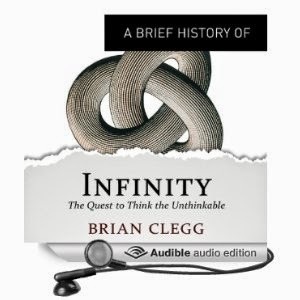 I frequently get emails from people who have read my books (usually satisfied customers!) - but the other day, for the first time, I was contacted by someone who had enjoyed listening to one - the audio book version of
A Brief History of Infinity
.
I frequently get emails from people who have read my books (usually satisfied customers!) - but the other day, for the first time, I was contacted by someone who had enjoyed listening to one - the audio book version of
A Brief History of Infinity
.Something that was particularly encouraging about hearing from Richard Madigan in New York was that the audio experience was sufficiently clear that he felt inspired to produce the graphic below of Galileo's 'parallel wheels' thought experiment.
For some reason I had always imagined it turning the other way, but it's fun having a concept in an audio book made very elegantly visual this way.
Here's the GIF:

Published on July 15, 2014 03:11
July 14, 2014
Soil Association versus science
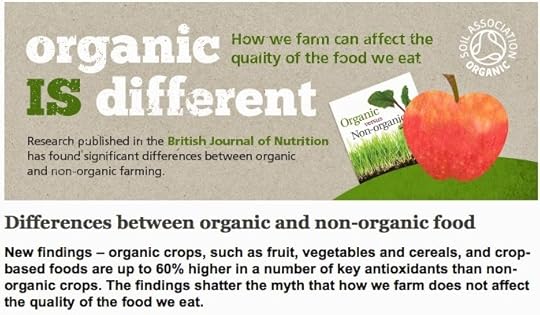 The Soil Association's carefully worded announcement headingI like to keep an eye on the UK's organic body, the Soil Association. I have been a little suspicious about their approach to science ever since I queried an outburst from them on the subject of nanoparticles six years ago.
The Soil Association's carefully worded announcement headingI like to keep an eye on the UK's organic body, the Soil Association. I have been a little suspicious about their approach to science ever since I queried an outburst from them on the subject of nanoparticles six years ago.In January 2008, the Soil Association, banned nanoparticles from organic products. Nanoparticles are ultra-small particles of anything, provided the substance is divided up into pieces that are just a few nanometres (billionths of a metre) across. But the Social Association specifically only banned man-made nanoparticles, claiming that natural ones (like soot) are fine because ‘life has evolved with these.’
This is just not an acceptable argument. If a nanoparticle is dangerous because of its scale – entirely possible, because the physics (rather than chemistry) of particles of this size is quite different from the objects we are familiar with – then that danger is just as present whether it’s natural or not. Even where scale isn’t the only factor, natural nanparticles can be dangerous because of the way they interact with the body.. Viruses are natural nanoparticles, and like soot, aren’t ideal for the health.
The Soil Association defends its position by saying that their approach is on a parallel with carbon dioxide in the air, where there is no problem with the natural carbon dioxide, only the manmade extra contribution. This is a specious argument, both because carbon dioxide is carbon dioxide, and if levels are too high it doesn’t matter where it’s coming from – but also because there is no comparison between CO2 and a nanoparticle that could be directly physically dangerous to humans.
To make matters worse, the Soil Association also say that it can’t control natural nanoparticles present in the environment, they’re just there. But this is relevant; the Soil Association isn’t an environmental control group. It is discussing what goes into organic products, and there is nothing to stop a manufacturer putting natural nanoparticles into a product either by accident or intent. You might as well say we don’t mind a manufacturer putting salmonella into organic food, because it’s natural. If the Soil Association believes nanoparticles are a bad thing, it should ban all nanoparticles from a product that gets their seal of approval, not just artificial ones.
In summing up, the Soil Association let slip the reason it takes this strange attitude. I was told by a representative ‘[T]he organic movement nearly always takes a principles-based regulatory approach, rather than a case-by-case approach based on scientific information.’ In other words, theirs is a knee-jerk reaction to concepts, rather than one based on actual science.
The latest example of this in action was a joyous announcement they sent out proclaiming that a 'landmark paper' had shown significant differences in the nutritional cogent of organic and non-organic crops. (Interestingly, they did not send out a similar email when the last two papers came out showing no significant differences.)
Even though the Soil Assocation email gives the appearance of celebrating a victory for organic food, it is very carefully never actually says that the study showed that organic food was nutritionally better - and there's a good reason for that it. It doesn't. The big item that the Soil Association flags up is that the study showed more antioxidants in organic food. Unfortunately, this is a dead duck argument. There is no known nutritional benefits from consuming antioxidants. The only known outcome is that if you consume too much (typically from supplements) it increases the risk of death. So quite why they were trumpeting this as if it's a good thing, I don't know.
The email goes on to mention a couple of other lesser items, including the old canard about pesticide residues. But what it fails to mention is that the only significant nutritional difference highlighted by the study was a negative for organics. It said that organic food had a small but significant deficit in protein compared with non-organic food. As Professor Tom Sanders of King's College, London commented to the BBC: 'In terms of macronutrients (protein, carbohydrate, fat), the organic products contained less protein. Other nutrient differences were trivial and well inside the normal range of variation that occurs with different varieties, soil types and variations in weather.'
Strange they didn't mention that.
This has been a Green Heretic production
Published on July 14, 2014 02:31
July 11, 2014
It's not natural
 Human hair louse - nature at its bestThere used to be a common saying - less so in these 'everything goes' days - where people would shake their heads and say 'It's not natural.' But they got it all wrong - what they were really thinking is 'it's not civilised' or to put it another way, 'it's too natural.'
Human hair louse - nature at its bestThere used to be a common saying - less so in these 'everything goes' days - where people would shake their heads and say 'It's not natural.' But they got it all wrong - what they were really thinking is 'it's not civilised' or to put it another way, 'it's too natural.'The reason this phrase is so back to front is that we have a rosily incorrect mental picture of what is 'natural'. As soon as we hear the word we get a knee-jerk reaction that's all rosy and fuzzy about rolling hills and beautiful scenery and pretty animals and whole grain, organic, hand-knitted yoghurt. And of course there are circumstances where natural is better. Processed foods for instance. There are nations that are particularly good at beating the nature out of food and drink - dare I mention US squirty cheese (or is it Cheez?), chocolate and attempts to make tea to name but three.
However, most of the time, being natural is not so good. Here's a few aspects where we've improved on being natural.
It's natural:
... to die young. Without modern medicine the majority of people die before reaching adulthood.... to encounter poisons and pesticides. Some of the most poisonous substances in existence are natural, many of them acting as natural pesticides.... to suffer in the sun if you have fair skin. Okay, evolution can naturally take care of this to some extent by increasing pigmentation (or by not losing it in the first place), but this takes time and doesn't help you personally.... to be afflicted by parasites. Worms, fleas, lice - that's everyday reality. No one said nature was nice. But you can have fun grooming each other.... to stay in a relatively small area for life. Like visiting far flung places? It's unnatural.... for life to be unfair. We apply lots of unnatural 'fairness' to help those who need it, whether it's benefits or aid for those with disability and chronic illnesses.I could carry on for a long time. I hope you get the point. There was no bucolic, happy, natural past to wish we could return to. Not everything modern or unnatural is good - we need to keep and cherish the best of nature - but things are mostly far better than nature provides, and we should be thankful for that.
Image by Giles san Martin from Wikipedia
Published on July 11, 2014 01:23
July 10, 2014
Red hair twaddle
 Yes, alright, it was a windy day.I feel the strong urge to share with you what may be the worst piece of science-based reporting I've seen this year. It's from UK free newspaper Metro and it is titled Red head? Climate change could make you and your ginger compatriots EXTINCT. (The usually respectable Independent also covered this 'story.')
Yes, alright, it was a windy day.I feel the strong urge to share with you what may be the worst piece of science-based reporting I've seen this year. It's from UK free newspaper Metro and it is titled Red head? Climate change could make you and your ginger compatriots EXTINCT. (The usually respectable Independent also covered this 'story.')It may not be obvious now, but as the slightly younger picture of me alongside demonstrates, I am a member of this apparently endangered grouping. But what does the story say exactly? I will extract some of it's joyfulness, so you don't have to read it (though admittedly in the original you get a picture of Lily Cole rather than me).
The suggestion is that due to climate change and the 'rapidly increasing temperature across the British Isles, the red hair gene could soon be a thing of the past.' And the way we are told this story makes me shudder - and not because I am an endangered ginger. Take this line:
Scientists believe that we evolved over time to have red hair in this part of the world because of a lack of sunshine.
Whoa! Now first of all, the *HMMM* detector is always alerted by being told that 'scientists say' or 'scientists believe'. Who are these scientists and where can we find their paper on this subject? I don't expect a newspaper article to give me an explicit reference (though it would be nice), but I would like to see 'Dr Hamish McSpod of the University of Life made it clear in his paper "Why gingers are doomed" published in Nature'... or whatever, so I can nip over and take a look. What do we get? Nothing. I have asked Metro for references, but strangely they haven't replied.
And second of all, we didn't evolve to have red hair 'because of a lack of sunshine.' I could accept that an accidental mutation producing red hair and pale skin resulted in preferential survival in a low sunshine location like the UK (as the pale skin makes vitamin D production easier with less sun exposure), but don't make it sound as if evolution thought 'ooh, lack of sunshine, let's try red hair'. It doesn't work that way.
We then get told by Alastair Moffat of 'Scotlands DNA' that ‘If it was to get less cloudy and there was more sun, there would be fewer people carrying the gene.’ Hang on. Alastair Moffat of what? ScotlandsDNA is a company that 'aims to provide new insights into the genetic origins of Scots and those of Scots descent'. It does this by selling DNA tests. For money. And Alastair Moffat is a former director of the Edinburgh Festival Fringe, so clearly knows what he is talking about when it comes to science.
But leaving aside the suspicion that this was an article driven by a press release to sell DNA tests, is what Mr Moffat said true? If there were more sun, he tells us, there would be fewer people carrying the gene. This would be true if lots of red-haired people were dying out before they could reproduce (presumably from skin cancer). But we have this high tech stuff called sunblock now, and us red-heads really know how to use it. What certainly isn't the case is that evolution will some how decide 'We don't need that gene any more, as it's sunny, let's get rid of it.' Evolution is not directed.
Then, after the obligatory picture of Prince Harry (no comment), comes the absolute cracker of a finale:
Those with the warm-toned barnet can, surprisingly, create their own vitamin D, to make up for the fact that they cannot get it from sunshine as easily as people all over the rest of the world can.
So yup, you do the math. More sunshine equals more vitamin D, which means, our hair doesn’t need to do the work for us.
Please read that at least twice, because it is wonderfully bizarre. Bear in mind that:
Everyone makes their own vitamin D from sunlight hitting their skin - it's just that fair skin lets more ultraviolet through, making vitamin D faster than does a darker skin. Our hair does not do any work for us. It is dead. If you believed this article, you'd think there was a vitamin D factory in your hair, pumping the stuff into your body.
ARGHHH!
Published on July 10, 2014 01:30
July 9, 2014
Listening to Time Machines

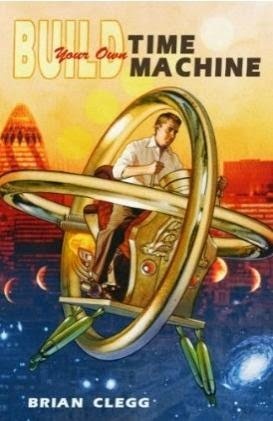 One of my favourite activities is giving talks based on my books, and I'm grateful to Bath University for hosting a talk recently on
How to Build a Time Machine
as part of their General University Lecture Programme.
One of my favourite activities is giving talks based on my books, and I'm grateful to Bath University for hosting a talk recently on
How to Build a Time Machine
as part of their General University Lecture Programme.While an audio version misses out on the excitement of seeing me wave my arms about (not to mention missing the sight of the cardboard box of time), it still might be of interest to hear the talk, which doesn't use slides. You should be able to play it using the controls at the top of the screen - but if that doesn't work, click here to access the podcast. It lasts about 45 minutes.
If it's a subject that interests you, please take a moment to have a look at my book, which inevitably can go into a lot more detail and cover many more aspects of the science of time travel.
Published on July 09, 2014 00:19
July 7, 2014
What is it?
A little quiz for you today. What do you think this is?

A few helpful hints. 'A piece of tree' won't do - this is a part of a piece of early technology. But what was it used for? And how? To give some scale, it's about 30 cm across.
I'll be back with the answer tomorrow.

A few helpful hints. 'A piece of tree' won't do - this is a part of a piece of early technology. But what was it used for? And how? To give some scale, it's about 30 cm across.
I'll be back with the answer tomorrow.
Published on July 07, 2014 01:13



